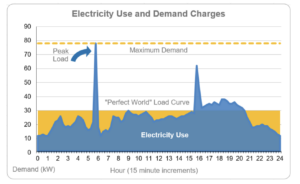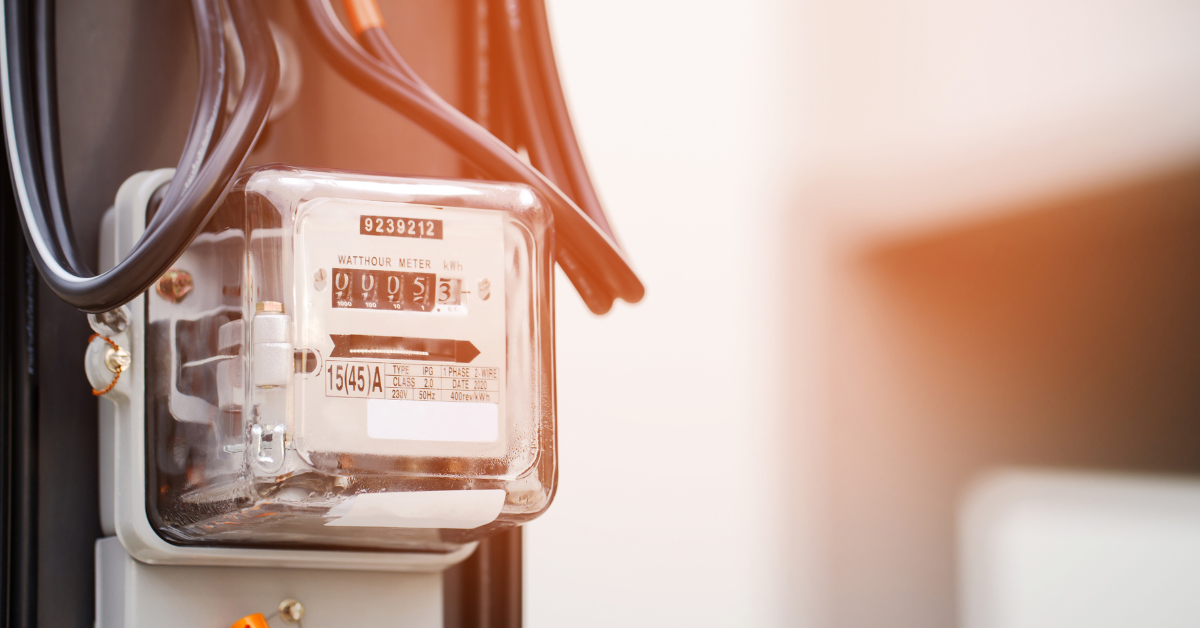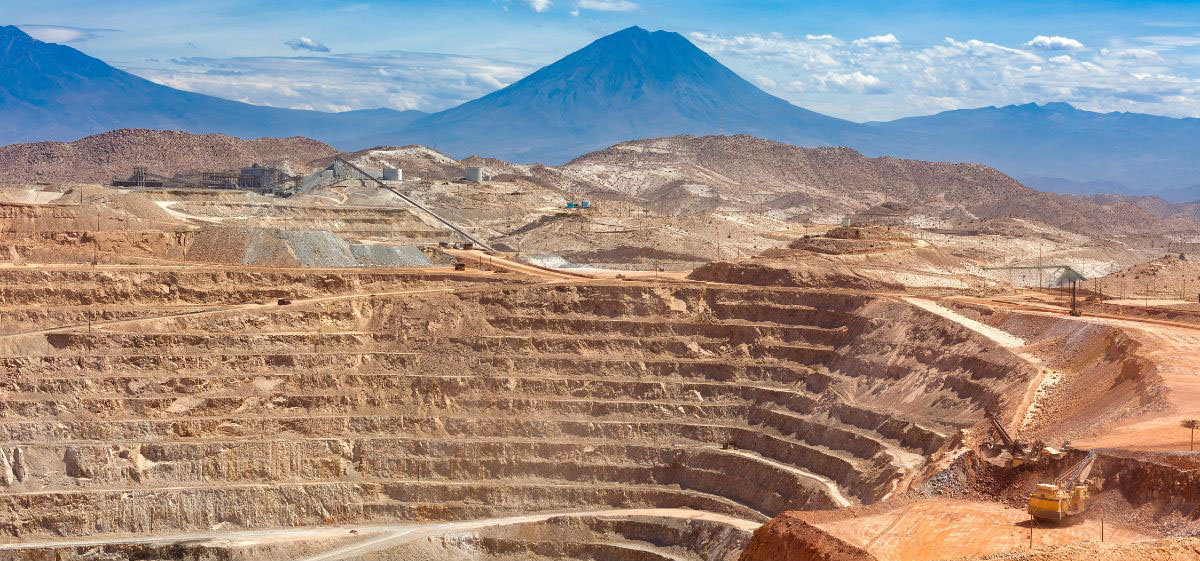Similar to other types of infrastructure, like highways, the electric power system is built to meet maximum demand. While a five-lane beltway may be nearly empty at four in the morning, all of those lanes are definitely being used during rush hour. Transmission operators and distribution utilities do the same thing. They build out the electric system capacity to meet maximum demand so that when everyone is running air conditioning and appliances at the same time, there is adequate electricity and infrastructure to keep the lights on.
Electricity use is not level. Depending on the time of day and the season, electricity use goes up and down based on how much is needed at a given point in time. If you graph this out, it is known as a load curve or load profile. In a perfect world, a load curve would not be a curve at all. It would be flat. The more consistent the demand for electricity is, the more efficient the electric system is. A flatter load curve means that less money needs to be spent on capital costs to build and maintain infrastructure for peak use. This minimizes infrastructure costs per unit of electricity and ultimately makes electricity less expensive.

So what are demand charges? There are two primary ways that electric utilities bill customers for electricity. Utilities bill customers for the amount of electricity that they consume each month. These consumption charges are the sum of all electricity in kWh that a customer uses over the course of the billing period (usually a month). The other way utilities bill some customers (usually larger commercial and industrial customers) is through demand charges. Demand charges are billed for the highest level of electricity used during a billing period, sometimes called maximum or peak demand. Utilities introduced demand charges so that the costs of maintaining the power system are paid by those who require the most from the system.
Most of us who drive EVs are residential customers; while charging at home, we generally pay for the amount of electricity we use each month, called a volumetric charge or consumption charge, through a per kWh price. Commercial and industrial customers sometimes pay demand charges to account for their disproportionate impact on the grid based on how much electricity they use at any given time.
For example, a large factory that runs 24 hours a day, 7 days a week can save a lot of money by keeping their electricity use stable. On their monthly electric bill, they will be charged a demand charge for a specific timeframe (usually 15 minutes) when their energy use level is at its highest. This charge is billed as a per kW charge and can amount to between 30% and 70% of a business’s monthly electricity bill. For large commercial and industrial utility customers, these demand charges can provide significant savings compared to a straight volumetric energy charge. If you think about your home electricity use, running your clothes dryer, refrigerator, furnace, oven, hot water heater, and dishwasher all at once will create a much higher demand than if you do these things at different times.
So what does this have to do with EV charging? Well, EV charging can be very…shall we say…spiky. EV charging, especially fast charging, requires a lot of electricity use over a short period of time. But between charges, the charging station just sits. Even Level 2 charging may be in use over a few hours, but unless there is a high utilization rate (meaning the charger gets used many hours out of the day by multiple vehicles), the use will be very inconsistent. This is the opposite of flat. (Remember that perfect world we discussed earlier?)
This might not matter much if you charge your EV at home. If you have access to home charging, you have a Level 1 or Level 2 charger, and your EV charges for a few hours each day. You likely pay your utility bill per kWh for the amount of electricity you consume in a month and life is good. But if you are installing EV chargers as public chargers, or at multifamily housing, condominium sites, or an office building, you are likely on a commercial or industrial utility rate and can incur demand charges for spikes in electricity use that can quickly add up.
A charging location with 6 fast chargers (DCFCs) that are 150 kW can create a demand of 900 kW if they are used simultaneously. Demand charges vary by utility, but can easily exceed $10 per kW. That could add a $9,000 monthly bill to our example charging facility. Those costs are likely to be passed on to customers, which drives up the cost of public charging. Even Level 2 chargers can experience overwhelming demand charges that make small commercial installations financially unfeasible.
In our perfect world, all installed EV chargers would be used every minute of every day to make sure that their load profile was flat. But EVs are a growing market and in order to encourage EV adoption and range confidence, we need to build charging infrastructure before it is needed. This leads to a lot of charging stations that start out with low utilization or a low load factor. Low utilization means that those expensive demand charges aren’t spread out over very many kWh sales, making each kWh that an EV driver buys very expensive. So how do we fix this problem?
Unfortunately, there is not a one-size-fits-all solution to EV charging and demand charges. There are around 3,000 electric utilities in the U.S., and each of them has a different rate structure. Some utilities are exploring different solutions to reduce the impact of demand charges on EV charging. Some utilities like Southern California Edison (CA), offer a transitional option (sometimes called a demand charge holiday) that gives an EV charging installation time to get up and running and build utilization over several years through consumption or volumetric charges (similar to residential charges) before demand charges kick in. Other utilities like Con Edison (NY) and National Grid (MA) offer a tiered approach in which the demand charge is triggered and increases over time as utilization grows. Dominion Energy (VA) has a non-demand billing rate which basically means it bills by consumption that is available to any customer. As more charging stations are built, utilities and regulators are adopting new approaches to mitigate the impacts of demand charges.
However, the process required for a utility to develop creative new approaches and rates is neither fast nor easy. Outside of utility regulation, some charger owners have used technological fixes for load management and managed charging, which limit demand from chargers to a set threshold or stagger vehicle charging to prevent triggering excessive demand charges. One large corporation committed to building out public charging has indicated that it simply won’t consider building infrastructure in utility territories where demand charges tank their return on investment.
What are the takeaways?
Ultimately, one of the very best things about electric vehicles (besides their lack of emissions, reduced need for maintenance, and how fun they are to drive) is their ability to serve as mobile energy storage. They have incredible potential to make the electric grid more efficient, put downward pressure on rates, and flatten that load curve. Slow charging as the default, rate structures that incentivize off-peak charging, and even vehicle-to-grid technologies will be part of the evolution toward strategic electrification and a perfect world where a utility load curve isn’t a curve at all.
A special thanks to Phil Jones and Bruce Edelston of the Alliance for Transportation Electrification for their insights on utility demand charges and EV charging.


